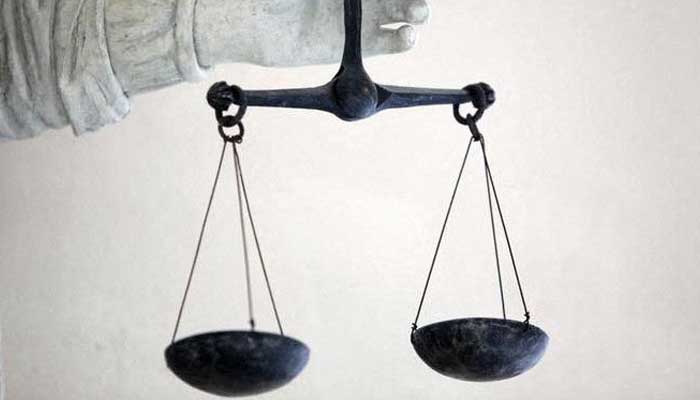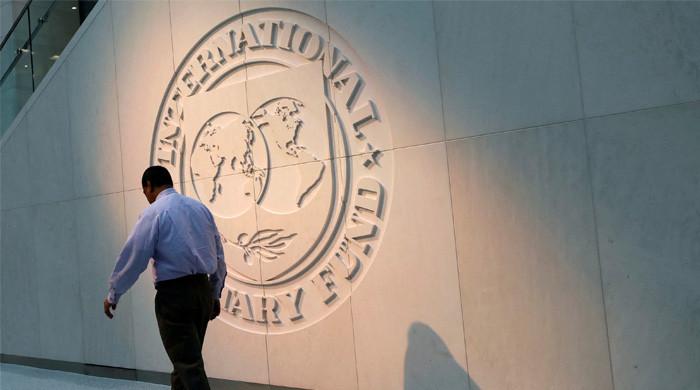Malice towards none
‘Contempt of court’ is a useful tool to enhance accountability in society so that no official violates court orders
September 06, 2023

No judiciary can afford an undeniably partisan appearance and antics that betray an agenda. It has been nearly 15 years that we have seen judges trying to become the darlings of social media, which is much easier in our day and age.
Of course, it is a challenging task for the judiciary to be both adaptable and tough – the two qualities deemed critical for its smooth functioning. But all such crude attempts made while deciding on or discussing cases to defend one’s opinion make the entire exercise questionable.
Jurisprudence is more of an art form or a craft that powers important advances in the constitutional and legal history of a country. Ideally, the constitution is a multipurpose gripping device that holds the country together. In Pakistan, the most recent discussions and observations in and outside courtrooms have created some controversies.
In many countries, judicial review is a standard practice but ideally it applies to the most exceptional cases. In Pakistan, for the last 15 years at least, the judiciary has been using three devices to assert its authority and to some extent cripple other organs of the state: contempt of court, judicial reviews, and suo motu notices. These three devices were put in place for exceptional situations, especially when fundamental rights of the people are under threat. Society expects that the apex courts exercise their powers with utmost care and diligence, and not to forward some agenda of selective justice.
‘Contempt of court’ is a useful tool to enhance accountability in society so that no official violates court orders. If a judge delivers an order – mostly in favour of an applicant who may be a victim of gross injustice – the order is binding. All concerned must follow and implement those orders without exception. If the executive and its concerned officers refuse to listen, it may cause a complete breakdown of the judiciary in society. The judiciary must have the authority to use contempt of court to punish any officer who refuses to implement the court orders.
Unfortunately, in Pakistan, there have been many instances when judges used contempt of court to settle personal scores, target an undesirable individual, or satisfy an inflated ego. There have been examples in which contempt of court had nothing to do with protecting fundamental rights or a victim. The case in which the apex court punished an elected prime minister – Yusuf Raza Gilani - and sent him packing was not worthy of such harsh punishment. But nobody could question the honourable chief justice, neither was there any mechanism to challenge that decision.
The second device that has both curative and deadly potentials is judicial review. This mechanism is useful if the executive or the government approves laws that go against fundamental and human rights. The primary responsibility of the judiciary – or of any other organ of the state – is to facilitate and protect its people.
If the legislature or the executive embarks on a journey to target people – or any particular individual – through discriminatory acts and amendments, it is the judiciary that uses judicial review to assert people’s rights. This device is for the people and not for the judiciary itself.
For any such review of the legislation, there should be at least two criteria: first, the criterion of fundamental and human rights, and second, the number and seniority of judges who do sit to review any piece of legislation that parliament has passed. Ideally, if the legislation has nothing to do with people’s fundamental and human rights, there is perhaps no need to review it. Parliament should have absolute authority over such matters of legislation. If the apex court decides to take up the case of a judicial review, ideally the full bench should hear the case.
Here two examples may be of use to clear the point. The Kesavananda Bharati case of 1973 in India was a prominent case in which the Supreme Court of India delivered a landmark decision to protect people’s rights. With a razor-thin majority of 7:6, the court held that the Indian parliament could amend any provision of the constitution to fulfil its ‘socio-economic obligations’. The Indian constitution’s preamble says “provided that such amendments did not change the constitution’s basic structure” with regard to people’s rights that all organs of the state must protect.
The Indian court held that the 24th Amendment was entirely valid but found that the first part of the 25th Amendment was intra vires (inside the powers) and the second part of the same ultra vires (outside the powers).
The second example is from our past when in August 2015, the Supreme Court of Pakistan delivered another landmark judgment. It was chief justice Nasirul Mulk who ensured that the full bench of 17 judges hear the case in which applicants had challenged the 18th and 21st amendments.
There were 35 identical applications against the two amendments and the 17-member bench dismissed the petitions challenging the 21st Amendment with 11 judges voting to dismiss the pleas and six in favour. The apex court also rejected the petitions challenging the 18th Amendment by a 14-3 vote. Chief justice Nasirul Mulk adhered to the two criteria: one, the legislations and petitions did involve fundamental rights, and two, the full bench heard the case.
A major advantage of full-court benches is that they help in the development and understanding of laws as dissenting notes provide ample opportunity for observers and students of law and political science to form their opinion.
Lately, judicial review has been used even when there is no question of fundamental rights. Then repeated refusals to form full benches has also become a blot.
Lastly, the power of suo motu has also become controversial as many such notices in the past 15 years have yielded verdicts that lack fairness and transparency. This nation has experienced judicial activism in the shape of suo motu notices that had no proper justification.
It has resulted in the trivialization of jurisprudence at the highest level. The apex court must keep itself above petty issues and frivolous matters. The dignity and respect of the judiciary depends on its behaviour.
Contempt of court, judicial review, and suo-motu notices are useful tools to protect fundamental and human rights and ensure the implementation of verdicts. The judiciary must use them sparingly and only in favour of public interest, not in malice to anyone.
The writer holds a PhD from the University of Birmingham, UK. He tweets/posts @NaazirMahmood and can be reached at: [email protected]
Disclaimer: The viewpoints expressed in this piece are the writer's own and don't necessarily reflect Geo.tv's editorial policy.











